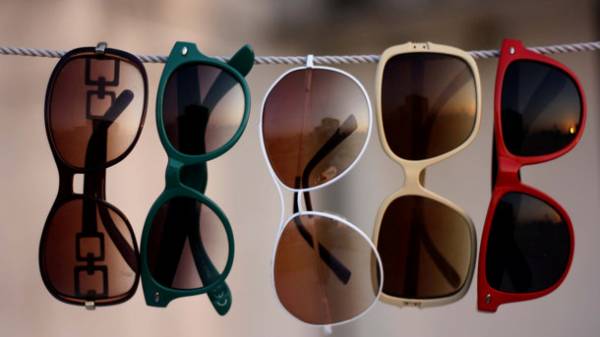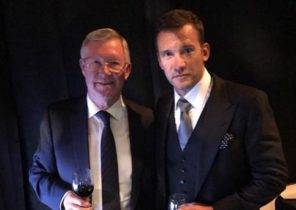
Sunglasses have become a fashion accessory. However they are we really need to protect your eyes from sunlight, dust and other adverse factors. About why the sun is hurting my eyes, how can we prevent it? and buy the right sunglasses, writes likar.info.
The sun damage to the eyes
The sun is the source of heat and energy that is integral to all life on Earth. However, as we know, all’s well that in moderation, and prolonged sun exposure can lead to the development of several adverse events, mainly skin and eyes.
Clinically proven that if a person stays for a long time under direct sunlight without proper protection, it can damage not only the surface of the eye, but also its internal structure. Further it leads to development of acute and chronic ocular pathologies that require serious treatment.
In case of direct exposure to ultraviolet rays damage the cornea of the eye, and such failure is similar to skin burns. In addition, regular exposure to ultraviolet radiation on the eye has a cumulative effect that can cause the development of serious ocular pathologies. So, in rare cases, when exposed to UV rays may develop melanoma of the eye. It’s rare, but at the same time, very aggressive disease that metastasizes very quickly. Currently, treatment for melanoma eye.
Ultraviolet light is harmful to eyes and that can lead to the development of photokeratitis (an inflammatory disease of the cornea), snow blindness, and solar retinopathy and dry eye syndrome. As for visible light, it can worsen visual acuity and causes eye fatigue. So when sitting at a computer monitor so my eyes get tired.
It is noteworthy that the eyes of children and adolescents are more susceptible to the action of ultraviolet radiation. This happens due to the fact that their pupil is wider, and the lens is more transparent than adults. In addition, children spend more time than adults and rarely enjoys high quality sunglasses. As a result of such activity before the age of 18 children get to 25% life dose of ultraviolet radiation. In this regard, the UV protection is extremely important especially in childhood and adolescence.
Types of ultraviolet rays
Ultraviolet rays are components of sunlight. Depending on the wavelength they are of three types: UV-A, UV-b and UV-C. According to the laws of physics, the shorter the wavelength, the more energy effect it has. Therefore, the ultraviolet rays with shorter wavelength are more harmful to the body than the ultraviolet rays of higher wave length.
Ultraviolet rays of type A. These ultraviolet rays have the longest waves, and they contribute to the appearance of sunburn. In addition, these rays are responsible for premature aging of the skin.
– Ultraviolet rays type. Sun burns mainly occur because of exposure to ultraviolet rays of type V. in addition, they are the most common cause of cancer of the skin (particularly melanoma). Their long-term effects on the eyes can cause the development of cataracts.
– Ultraviolet rays type. This type of ultraviolet rays are the most dangerous because it has the shortest wavelength. Thanks to the ozone layer ultraviolet rays of type C do not reach the Earth’s surface, although the emergence of a large number of ozone holes has led to the fact that these rays began to penetrate the globe.
It is noteworthy that the strongest ultraviolet rays act on the eye in the morning and in the afternoon, not at noon, as many people think. So, most of us hiding from the sun when it is overhead, fearing the negative effects of sunlight on the skin. However, unlike the skin, the eyes suffer from the sun rays that Shine at eye level. Therefore, morning and afternoon – the most dangerous periods.
Factors influencing the intensity of ultraviolet radiation
Do not forget that there are many factors that affect the intensity of ultraviolet radiation. If you want to protect your eyes from excessive sun exposure, you will certainly need to know the following:
Clouds do not protect from UV rays. Thus, penetrates through the clouds more than 90% ultraviolet radiation;
In the mountains the UV radiation intensity is higher than in the lowlands. If you picked up on every thousand meters the radiation intensity increases by about 10-12%;
– Clean snow can reflect up to 80% of UV radiation, dry beach sand, only 20% of the radiation;
– Sea water reflects up to 30% of UV radiation;
The UV light penetrates the water column and at the depth of 1.5 meter its intensity is 40% of the intensity at the pond surface.
Sunglasses: how they can help
When buying sunglasses it is important to choose a quality protection against UV radiation. This accessory helps in Sunny weather, protecting eyes from bright light. However, not all sunglasses protect from UV rays. If you wear glasses without UV-filter, making things worse. So, in the dark the pupil expands, and this means that the retina of the eye gets more sunlight than usual. In the end, with these glasses you will get a retinal burn.
Quality sunglasses should be made of glass or polycarbonate. It is noteworthy that each of these materials has its advantages and disadvantages. And glass and polycarbonate to securely block out ultraviolet radiation. Glass is much harder to scratch. In addition, it is the most transparent material known to mankind. Therefore, the glass is still used in microscopes, binoculars, cameras and other optical equipment. The disadvantage of glass is the fact that it does not block the ultraviolet radiation of type A, therefore, points require additional coverage. In addition, the glasses of glass heavy enough, very easy misted, and in the fall can be broken.
As for polycarbonate lenses, they are almost 10 times stronger than glass or ordinary plastic (used to make cheap sunglasses). This durability of polycarbonate makes these glasses ideal for children and athletes. They are much lighter and thinner glass sunglasses and block 100% of UV radiation. The disadvantage of polycarbonate glasses is the fact that this material is quite easy to scratch, and its transparency is not the same as the glass. In polycarbonate glasses objects may not seem so clear.
In addition to glass and polycarbonate, there are other materials used to make sunglasses. For example, it may be impact resistant lenses that are useful to athletes – skiers and snowboarders.
Special coating and adding special chemical substances to provide extra protection for the eyes from ultraviolet radiation. In more shaded glasses eyes much more comfortable because they are less tired from the rays of the visible spectrum. The more bright Sunny weather, the more it will suit the dark lenses. Lenses lighter shades will fit in cloudy or foggy weather.
Degree of protection sunglasses
There are five types of lenses depending on the degree of protection. Quite light lenses pass 80-100% of the light. They are suitable for wearing in cloudy weather. Sunglasses miss only 3-8% of the light, and they can be used, for example, in the mountains, where UV radiation intensity is much higher than on the plains. If you are going to the sea, in this case you fit the lens 2-3 of the categories that flow from 18 to 43% of light.
Whatever glasses you choose, they should be completely transparent, allowing you to clearly distinguish objects at different distances. Quality sunglasses have special labels indicating the degree of protection and the ability of the lens to adapt to brightness or to remove his glare. The label indicates the percentage of blocking ultraviolet rays type A and B. In some cases indicates where points can be used in the city, in the mountains or the sea. It is noteworthy that in the glasses category 4 can’t drive the car on the labels is also indicated.
It should be noted that photochromic lenses – the so-called “chameleon”, which react to light intensity and capable of changing the degree of darkening, becoming dark in bright light, and the room is almost transparent. However, the photochromic substances into such glasses wear out quickly, so change the “chameleons” you need to regularly.







